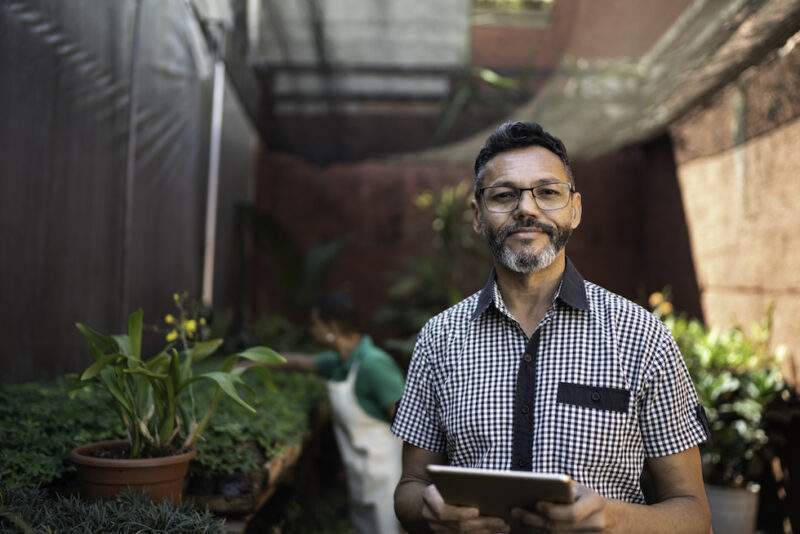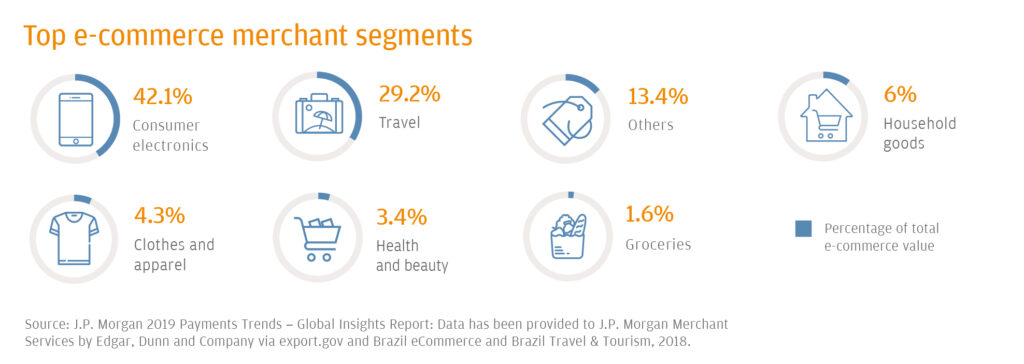

Analysts have long eyed Brazil for its potential to host a Latin American ecommerce boom. Brazil is showing signs it can deliver on this promise by reforming its financial sector to create more competition and a wider range of payment methods.
The government has encouraged fintech innovation that’s enabling more financial inclusion, to help customers pay in new and seamless ways. At the same time, the pandemic has accelerated ecommerce adoption by everyday shoppers.
Even before the pandemic, market analysts predicted Brazilian ecommerce to grow 99% by 2022 to reach US$65 billion,1 driven by sales across cross-border merchants like Aliexpress, Wish, Amazon, Ebay and Banggood.
The pandemic gave these growth predictions a shot in the arm. The Brazilian Association of Electronic Commerce (ABComm) and fraud protection company Konduto analyzed more than 50 million orders from more than 4000 online stores between March and June 2020. They discovered sales doubled in April, boosting companies’ digital revenues by more than 80%.2


Brazil’s central bank estimates nearly 55 million Brazilians don’t have a bank account, underlining the need to provide alternative payment methods. But don’t be fooled by the number of unbanked consumers in the country. Around 60% of the population still shop online and 44% also transact cross-border.3
Brazil has a voucher system called Boleto Bancário, which is widely used across the country. ‘Boletos’ allow unbanked consumers and businesses to buy almost anything, through an invoice that falls due on a particular date.4 They can be used for online and offline purchases in Brazil, but are mostly paid for in cash at ATMs, bank branches, and post offices — a trend that has persisted even throughout the pandemic. Put simply, the Boleto is table stakes for doing business as a merchant in Brazil.
With around 1.6 credit cards per capita, cards are the most common way to pay for online purchases in Brazil. Cards are used for about 59% of online transactions. As more Brazilians, especially members of Brazil’s sizable unbanked population adopt ecommerce, cards are expected to decline in popularity and give ground to alternative payment methods. However, for both domestic and international merchants looking to make gains in Brazil’s fast growing ecommerce economy, providing card payment options at checkout remains crucial.
Not all domestic payment cards in Brazil are authorized for foreign currency transactions, so working with a partner with a local presence that can accept local currencies and settle in the merchants preferred currency is important for cross-border sales.
Another reason Brazilians favor credit and debit cards is because they support the ability to pay in installments, making everyday purchases more affordable for those on tight budgets and low incomes.
Brazilian merchants have allowed customers to buy products and pay in installments for years. This payment preference has its roots in the crediário system from decades ago, which allowed shoppers to register with local merchants and pay for goods on account.
‘Parcelado’ — or installments — allow Brazilian consumers to split the cost of both big-ticket items and small purchases over several payments. Installment payments are offered and financed by merchants. Installments are typically charged monthly and most payment platforms allow buyers to make up to 12 installment payments with no interest. By accepting installment payments, businesses can expect to boost sales in Brazil by 50% or more.
A recent Think with Google report revealed, Brazilians “value payment options more than the other markets in the study” like India, the UK, and the United States.5 Despite cards being the most popular form of payment, the report showed that Brazilians considered having non-credit card payment options at checkout was one of the most influential factors in deciding to buy online. For merchants, offering customers a choice of payment methods may be a decisive factor in the ecommerce sales success.
Discover Rapyd’s all-in-one payment solution for Brazil.
Sources:
This website uses cookies.
Read More